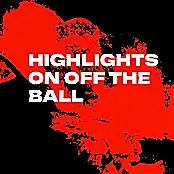Munster's loss to Leinster on Saturday night highlighted what's possible moving forward.
The game was already decided. Leinster's lead was unassailable. But Munster's approach to a lineout five meters out was still incredibly demoralizing.
Packing as many players as possible into the lineout, Munster won their own ball and then set up a maul. Damien De Allende could be seen at the back of it. Chris Farrell was in the middle of it. The maul never moved despite half of Munster's backline being in it.
Eventually, Craig Casey whipped the ball out towards Ben Healy who had two players outside of him.
Leinster's defensive line crashed forward and swallowed up the Munster attack. Munster had nowhere to go but backwards. It's not that this move failed that is so frustrating. It's the fact that this is the way that the Munster coaching staff chose to approach the situation.
Putting your backs into a maul with forwards means you have to win in the maul. And if you don't win in the maul, there is no Plan B. There is no spacing on the field, so you cannot even expect to create off the cuff by breaking off the back of the maul. You're purposely not asking as many questions of the defence as you can.
The defence knows that it can just stop the maul and then they're safe. And putting extra bodies in the maul doesn't actually mean it's going to be more effective. It can often have the opposite effect, disrupting the shape of the maul to make it easier to stop.
In many ways, this moment captured the failing of the Johann van Graan era in Limerick. It's an otherwise completely forgettable moment of reductive rugby.
And it came during a game where Munster's younger players showed what they could be capable of.
Gavin Coombes suffered an early ankle injury. Alex Kendellen replaced Coombes off the bench. The Ireland under-21 international has only just turned 21 years of age. This was a huge hour of rugby for him. Kendellen faced off against Caelan Doris, Jack Conan and Josh van der Flier. He matched the physicality of Doris, made strong carries like Conan and worked the breakdown admirably against van der Flier.
Kendellen had one moment midway through the second half when Doris lined him up as first receiver. For most world class rugby players, this isn't a position you want to be in. For Kendellen, it's not something he's ever experienced before. But then he did something to Doris that the Leinster six probably hasn't experienced before.
Doris attempted to change the point of attack then blow through Kendellen's inside shoulder. The young Munster man matched his movement and got lower. He drove up through Doris' body, moving him five yards backwards. Doris frenetically searched for someone to give the ball back to as he hit the ground.
As Doris hit the ground and stayed there, Kendellen bounced up instantly to win the turnover at the ensuing ruck.
Fineen Wycherley started in the second row and stood up to the task of matching the Leinster physicality. Thomas Ahearn enjoyed an impressive cameo off the bench. As did Fineen's brother Josh Wycherley when he came off the bench. But it was Craig Casey at scrum half who made the biggest impact in the second half.
The diminutive passer replaced Conor Murray on the hour mark. Murray had a solid game. But Casey completely changed the tempo of Munster's attack. He took quick penalties, he made quick decisions at the base of rucks and threw the ball with accuracy.
Munster's identity over the final quarter of the game was completely different. Casey changed the tempo and ball speed, then Ben Healy replaced Matt Gallagher to change the dynamism of the backline.
Ironically, Joey Carbery was moved from out half to fullback to accommodate Healy off the bench. Carbery (in)famously left Leinster to avoid playing fullback and start at out half. But with top quality out halves coming through the ranks, this is now an option for future Munster coaches.
Carbery at fullback becomes a second playmaker. Van Graan didn't need to move him from out half to get a second playmaker on the field though. Starting Simon Zebo at fullback ahead of Matt Gallagher would do the same thing. Gallagher is leaving Munster after this season, so Zebo will have fewer obstacles to playing time.
Jack Crowley is also a factor in this rotation. Crowley, like Carbery, can play out half or fullback. In fact, his skill set suggests he could even play 12 if his career develops that way.
Regardless, the abundance of quality in Munster's back line is clearly ripe for development.
Chris Farrell is still only 29 years of age. Keith Earls, Andrew Conway, Shane Daly and Zebo are high quality complementary players to the younger group. Munster must continue to build out the depth of the whole squad and bring forward another key forward or two, but Saturday's game against Leinster highlighted that there is a base there to build on.
Van Graan was never able to do that, nor did he ever seemingly want to do that, instead he favoured veteran additions from overseas and playing scared rugby.
The Munster of the 00s played conservative rugby. They kept the ball in the pack and kicked at goal every chance they got. But nobody would ever accuse them of playing scared rugby.
"His timing was so unfortunate" - Gerry Thornley on Damien De Allende.
Team of Us. Everyone In.
Vodafone. The main sponsor of the Irish Rugby Team.
Download the brand new OffTheBall App in the Play Store & App Store right now! We've got you covered!
Subscribe to OffTheBall's YouTube channel for more videos, like us on Facebook or follow us on Twitter for the latest sporting news and content.









